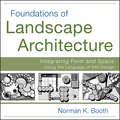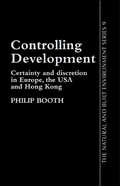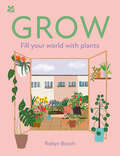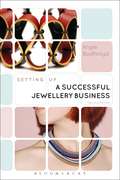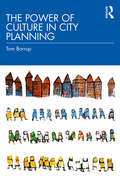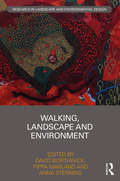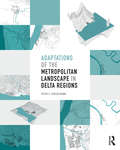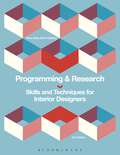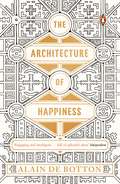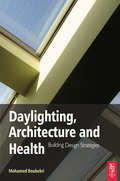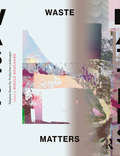- Table View
- List View
Toy Car (UEB Contracted)
by Rnib BookshareThis is a side view of a little toy car with its front on the left of the page and its back on the right. There is a locator dot shown, which will be at the top left of the page when the image is the right way up. Above and between the wheels is the car door. There is a window at the top of the door, with the door handle just below it. Behind this window is another one, near the back of the car. There are small bumpers sticking out at the front and rear of the car.
Toy Car (UEB UNcontracted)
by Rnib BookshareThis is a side view of a little toy car with its front on the left of the page and its back on the right. There is a locator dot shown, which will be at the top left of the page when the image is the right way up. Above and between the wheels is the car door. There is a window at the top of the door, with the door handle just below it. Behind this window is another one, near the back of the car. There are small bumpers sticking out at the front and rear of the car.
Wigwam (Large Print)
by Rnib BookshareThis image shows a wigwam or teepee - a cone-shaped structure made of flexible material supported on a rigid frame. There is a locator dot shown, which will be at the top left of the page when the image is the right way up. This front view makes the wigwam look triangular, with the wide base at the bottom of the image, narrowing to a pointed top. Four supporting poles can be seen sticking out at the top centre of the image. This wigwam is covered in canvas, which is decorated with zigzag lines and ovals near the top, and a wide stripe towards the bottom. The triangular entrance to the dwelling is towards the lower right of the image. Several pegs to hold the canvas down are shown along the lower edge of the image.
Wigwam (UEB Contracted)
by Rnib BookshareThis image shows a wigwam or teepee - a cone-shaped structure made of flexible material supported on a rigid frame. There is a locator dot shown, which will be at the top left of the page when the image is the right way up. This front view makes the wigwam look triangular, with the wide base at the bottom of the image, narrowing to a pointed top. Four supporting poles can be seen sticking out at the top centre of the image. This wigwam is covered in canvas, which is decorated with zigzag lines and ovals near the top, and a wide stripe towards the bottom. The triangular entrance to the dwelling is towards the lower right of the image. Several pegs to hold the canvas down are shown along the lower edge of the image.
Wigwam (UEB uncontracted)
by Rnib BookshareThis image shows a wigwam or teepee - a cone-shaped structure made of flexible material supported on a rigid frame. There is a locator dot shown, which will be at the top left of the page when the image is the right way up. This front view makes the wigwam look triangular, with the wide base at the bottom of the image, narrowing to a pointed top. Four supporting poles can be seen sticking out at the top centre of the image. This wigwam is covered in canvas, which is decorated with zigzag lines and ovals near the top, and a wide stripe towards the bottom. The triangular entrance to the dwelling is towards the lower right of the image. Several pegs to hold the canvas down are shown along the lower edge of the image.
Willow tree (Large Print)
by Rnib BookshareIn this image of a willow tree, the trunk stems from the bottom centre of the page and the leafy branches are in the bottom half of the page. There is a locator dot shown, which will be at the top left of the page when the image is the right way up. There is a picture of a willow leaf in the top left and a picture of a catkin, which has a soft furry structure, in the top right of the page. The leaf stem is to the top right of the leaf itself. The catkin is similarly positioned. For scale there is a 'stick man' representing the height of an adult person in the bottom right of the page. The willow is a relatively short-lived tree and rarely reaches 100 years old. There are many species of willow. It has a habit of dropping large and apparently healthy branches without warning, apart from the large cracking noise as the branch falls. This gives it its common name 'Crack Willow'. A particular variety of willow provides the wood used in the manufacture of cricket bats.
Willow tree (UEB Contracted)
by Rnib BookshareIn this image of a willow tree, the trunk stems from the bottom centre of the page and the leafy branches are in the bottom half of the page. There is a locator dot shown, which will be at the top left of the page when the image is the right way up. There is a picture of a willow leaf in the top left and a picture of a catkin, which has a soft furry structure, in the top right of the page. The leaf stem is to the top right of the leaf itself. The catkin is similarly positioned. For scale there is a 'stick man' representing the height of an adult person in the bottom right of the page. The willow is a relatively short-lived tree and rarely reaches 100 years old. There are many species of willow. It has a habit of dropping large and apparently healthy branches without warning, apart from the large cracking noise as the branch falls. This gives it its common name 'Crack Willow'. A particular variety of willow provides the wood used in the manufacture of cricket bats.
Foundations of Landscape Architecture: Integrating Form and Space Using the Language of Site Design
by Norman BoothA visually engaging introduction to landscape architectural design Landscape architectural design seeks to create environments that accommodate users' varying lifestyles and needs, incorporate cultural heritage, promote sustainability, and integrate functional requirements for optimal enjoyment. Foundations of Landscape Architecture introduces the foundational concepts needed to effectively integrate space and form in landscape design. With over five hundred hand-rendered and digital drawings, as well as photographs, Foundations of Landscape Architecture illustrates the importance of spatial language. It introduces concepts, typologies, and rudimentary principles of form and space. Including designs for projects such as parks, campuses, and memorials, this text provides the core concepts necessary for designers to shape functional landscapes. Additionally, chapters discuss organizational and spatial design structures based on orthogonal forms, angular forms, and circular forms. Helping students, professionals, and lifelong learners alike, Foundations of Landscape Arch-itecture delivers a concrete understanding of landscape architectural design to inspire one's imagination for countless types of projects.
Foundations of Landscape Architecture: Integrating Form and Space Using the Language of Site Design
by Norman BoothA visually engaging introduction to landscape architectural design Landscape architectural design seeks to create environments that accommodate users' varying lifestyles and needs, incorporate cultural heritage, promote sustainability, and integrate functional requirements for optimal enjoyment. Foundations of Landscape Architecture introduces the foundational concepts needed to effectively integrate space and form in landscape design. With over five hundred hand-rendered and digital drawings, as well as photographs, Foundations of Landscape Architecture illustrates the importance of spatial language. It introduces concepts, typologies, and rudimentary principles of form and space. Including designs for projects such as parks, campuses, and memorials, this text provides the core concepts necessary for designers to shape functional landscapes. Additionally, chapters discuss organizational and spatial design structures based on orthogonal forms, angular forms, and circular forms. Helping students, professionals, and lifelong learners alike, Foundations of Landscape Arch-itecture delivers a concrete understanding of landscape architectural design to inspire one's imagination for countless types of projects.
Controlling Development: Certainty, Discretion And Accountability
by Booth, PhilipFirst published in 1996. Routledge is an imprint of Taylor & Francis, an informa company.
Controlling Development: Certainty, Discretion And Accountability
by Booth, PhilipFirst published in 1996. Routledge is an imprint of Taylor & Francis, an informa company.
GROW: Fill your world with plants (National Trust)
by Robyn Booth National Trust BooksDiscover the joy of growing and using plants indoors and outdoors, no matter how limited your space.
Setting Up a Successful Jewellery Business
by Angie BoothroydAn updated edition of the best-selling handbook, this all-encompassing guide for jewellery entrepreneurs of all levels covers key lessons for setting up, running and growing a jewellery business.From the college graduate looking to set up a workshop, to the established maker ready to expand their business, Setting up a Successful Jewellery Business equips creative jewellers with the essential knowledge and tools to operate a professional jewellery business.Encouraging individuals to define their business objectives and strategy for the future, the guide deals with topics including:· presenting your brand;· protecting your designs;· how much to charge for your work;· selling to shops, galleries and individuals;· creating your website and driving traffic to it;· managing your time and finances plus other essential business skills.Updated with two new chapters, an expanded section on social media and a revised appendix, this is an indispensable jeweller's companion that provides the resources to take your business forward.
Setting Up a Successful Jewellery Business
by Angie BoothroydAn updated edition of the best-selling handbook, this all-encompassing guide for jewellery entrepreneurs of all levels covers key lessons for setting up, running and growing a jewellery business.From the college graduate looking to set up a workshop, to the established maker ready to expand their business, Setting up a Successful Jewellery Business equips creative jewellers with the essential knowledge and tools to operate a professional jewellery business.Encouraging individuals to define their business objectives and strategy for the future, the guide deals with topics including:· presenting your brand;· protecting your designs;· how much to charge for your work;· selling to shops, galleries and individuals;· creating your website and driving traffic to it;· managing your time and finances plus other essential business skills.Updated with two new chapters, an expanded section on social media and a revised appendix, this is an indispensable jeweller's companion that provides the resources to take your business forward.
The Power of Culture in City Planning
by Tom BorrupThe Power of Culture in City Planning focuses on human diversity, strengths, needs, and ways of living together in geographic communities. The book turns attention to the anthropological definition of culture, encouraging planners in both urban and cultural planning to focus on characteristics of humanity in all their variety. It calls for a paradigm shift, re-positioning city planners’ "base maps" to start with a richer understanding of human cultures. Borrup argues for cultural master plans in parallel to transportation, housing, parks, and other specialized plans, while also changing the approach of city comprehensive planning to put people or "users" first rather than land "uses" as does the dominant practice. Cultural plans as currently conceived are not sufficient to help cities keep pace with dizzying impacts of globalization, immigration, and rapidly changing cultural interests. Cultural planners need to up their game, and enriching their own and city planners’ cultural competencies is only one step. Both planning practices have much to learn from one another and already overlap in more ways than most recognize. This book highlights some of the strengths of the lesser-known practice of cultural planning to help forge greater understanding and collaboration between the two practices, empowering city planners with new tools to bring about more equitable communities. This will be an important resource for students, teachers, and practitioners of city and cultural planning, as well as municipal policymakers of all stripes.
The Power of Culture in City Planning
by Tom BorrupThe Power of Culture in City Planning focuses on human diversity, strengths, needs, and ways of living together in geographic communities. The book turns attention to the anthropological definition of culture, encouraging planners in both urban and cultural planning to focus on characteristics of humanity in all their variety. It calls for a paradigm shift, re-positioning city planners’ "base maps" to start with a richer understanding of human cultures. Borrup argues for cultural master plans in parallel to transportation, housing, parks, and other specialized plans, while also changing the approach of city comprehensive planning to put people or "users" first rather than land "uses" as does the dominant practice. Cultural plans as currently conceived are not sufficient to help cities keep pace with dizzying impacts of globalization, immigration, and rapidly changing cultural interests. Cultural planners need to up their game, and enriching their own and city planners’ cultural competencies is only one step. Both planning practices have much to learn from one another and already overlap in more ways than most recognize. This book highlights some of the strengths of the lesser-known practice of cultural planning to help forge greater understanding and collaboration between the two practices, empowering city planners with new tools to bring about more equitable communities. This will be an important resource for students, teachers, and practitioners of city and cultural planning, as well as municipal policymakers of all stripes.
Walking, Landscape and Environment (Routledge Research in Landscape and Environmental Design)
by David Borthwick Pippa Marland Anna StenningWalking, Landscape and Environment explores walking as a method of research and practice in the humanities and creative arts, emerging from a recent surge of growth in urban and rural walking. This edited collection of essays from leading figures in the field presents an enquiry into, and a critique of, the methods and results of cutting-edge ‘walking research’. Walking negotiates the intersections between the human self, place and space, offering a cross-disciplinary collaborative method of research which can be utilised in areas such as ecocriticism, landscape architecture, literature, cultural geography and the visual arts. Bringing together a multitude of perspectives from different disciplines, on topics including health and wellbeing, disability studies, social justice, ecology and gender, this book provides a unique appraisal of the humanist perspective on landscape. In doing so, it challenges Romantic approaches to walking, applying new ideas in contemporary critical thought and alternative perspectives on embodiment and trans-corporeality.
Walking, Landscape and Environment (Routledge Research in Landscape and Environmental Design)
by David Borthwick Pippa Marland Anna StenningWalking, Landscape and Environment explores walking as a method of research and practice in the humanities and creative arts, emerging from a recent surge of growth in urban and rural walking. This edited collection of essays from leading figures in the field presents an enquiry into, and a critique of, the methods and results of cutting-edge ‘walking research’. Walking negotiates the intersections between the human self, place and space, offering a cross-disciplinary collaborative method of research which can be utilised in areas such as ecocriticism, landscape architecture, literature, cultural geography and the visual arts. Bringing together a multitude of perspectives from different disciplines, on topics including health and wellbeing, disability studies, social justice, ecology and gender, this book provides a unique appraisal of the humanist perspective on landscape. In doing so, it challenges Romantic approaches to walking, applying new ideas in contemporary critical thought and alternative perspectives on embodiment and trans-corporeality.
Adaptations of the Metropolitan Landscape in Delta Regions
by Peter C BosselmannAdaptations of the Metropolitan Landscape in Delta Regions is about environmental quality and the long term livability of urban areas. In decades to come, climate change will affect cities everywhere, but nowhere have the effects of climate change already been felt as strongly as in low-lying coastal cities, cities located in large river deltas and near tidal estuaries. This book reflects on the contribution that spatial planning and urban design can make to a complex discussion about how city form and landscapes will need to adapt within metropolitan areas. The book’s focus is on the urban form of three delta regions: the Pearl River Delta in Southern China; the Rhine, Maas, and Scheldt Delta in the Netherlands; and the San Francisco Bay Area in Northern California. The three regions differ greatly, but despite their different political systems, history, culture and locations in three different climate zones, all three regions will be forced to respond to similar issues that will trigger transformations and adaptations to their urban form. Richly illustrated in color with detailed diagrams, models, photographs and sketches, the book is written for students, scholars and practitioners of environmental planning, and designers who need to respond to the future form of cities in light of climate change. For the professions shaping the physical world of cities and regions, the challenge is not only one of designing physical geometries but of social consequences.
Adaptations of the Metropolitan Landscape in Delta Regions
by Peter C BosselmannAdaptations of the Metropolitan Landscape in Delta Regions is about environmental quality and the long term livability of urban areas. In decades to come, climate change will affect cities everywhere, but nowhere have the effects of climate change already been felt as strongly as in low-lying coastal cities, cities located in large river deltas and near tidal estuaries. This book reflects on the contribution that spatial planning and urban design can make to a complex discussion about how city form and landscapes will need to adapt within metropolitan areas. The book’s focus is on the urban form of three delta regions: the Pearl River Delta in Southern China; the Rhine, Maas, and Scheldt Delta in the Netherlands; and the San Francisco Bay Area in Northern California. The three regions differ greatly, but despite their different political systems, history, culture and locations in three different climate zones, all three regions will be forced to respond to similar issues that will trigger transformations and adaptations to their urban form. Richly illustrated in color with detailed diagrams, models, photographs and sketches, the book is written for students, scholars and practitioners of environmental planning, and designers who need to respond to the future form of cities in light of climate change. For the professions shaping the physical world of cities and regions, the challenge is not only one of designing physical geometries but of social consequences.
Programming and Research: Skills and Techniques for Interior Designers
by Rose Mary Botti-SalitskyProgramming and Research: Skills and Techniques for Interior Designers, Second Edition, provides a step-by-step approach to mastering the process of documenting client and user requirements for any design project. Replete with examples and analyses of student and professional work, this book guides its readers through the creation of their own program documents. Both the National Council for Interior Design Qualification (NCIDQ) and the Council for Interior Design Accreditation (CIDA) consider programming a required core of knowledge. Programming and Research focuses on how the study of programming for interior designers prepares students for and advances them into the professional realm.Features-More than 100 images, including student work, help illustrate and explain the programming process -Appendices include actual programming documents used by successful interior design firms, a residential questionnaire, and a list of helpful resources -Key terms are highlighted in the text and defined in a comprehensive glossary New to this Edition-Updated with new coverage on evidence-based design, integrated project delivery (IPD), building information modeling (BIM), design across disciplines, LEED programming, designing on a budget, and time management -New examples and case studies throughout cover new technological tools being employed in the industry to collect data -More intuitive integration of art and graphics to explanations in the text Teaching Resources-Instructor's Guide provides suggestions for planning the course and using the text in the classroom, supplemental assignments, lecture notes, and sample test questions -PowerPoint® presentations include images from the book and provide a framework for lecture and discussion
The Architecture of Happiness: The Architecture Of Happiness (Vintage International Series)
by Alain De BottonThe Architecture of Happiness is Alain de Botton's exploration of the hidden links between buildings and our well beingBestselling author Alain de Botton has written about love, travel, status and how philosophy can console us. Now he turns his attention to one of our most intense but often hidden love affairs: with our houses and their furnishings. He asks: What makes a house truly beautiful?Why are many new houses so ugly?Why do we argue so bitterly about sofas and pictures - and can differences of taste ever be satisfactorily resolved?Will minimalism make us happier than ornaments? To answer these questions and many more, de Botton looks at buildings across the world, from medieval wooden huts to modern skyscrapers; he examines sofas and cathedrals, tea sets and office complexes, and teases out a host of often surprising philosophical insights. The Architecture of Happiness will take you on a beguiling tour through the history and psychology of architecture and interior design, and will forever alter your relationship with buildings. It will change the way you look at your current home - and help you make the right decisions about your next one.'Engaging and intelligent . . . full of splendid ideas, happily and beautifully expressed'IndependentAlain de Botton was born in 1969 and is the author of non-fiction essays on themes ranging from love and travel to architecture and philosophy. His bestselling books include Essays in Love; The Romantic Movement; Kiss and Tell; Status Anxiety; How Proust Can Change Your Life; The Pleasures and Sorrows of Work; The Art of Travel; The Architecture of Happiness and Religion for Atheists. He lives in London and founded The School of Life (www.theschooloflife.com) and Living Architecture (www.living-architecture.co.uk). For more information, consult www.alaindebotton.com.
Daylighting, Architecture and Health
by Mohamed BoubekriDaylighting, Architecture and Health examines the relationship between natural light in buildings and human health, considering both psychological and physiological issues and bringing together a range of research in the field. As we are becoming increasingly conscious of global warming and pushing towards energy efficiency in buildings, the book examines the question of daylighting from the perspective of the health of building occupants. It gathers and reviews all the latest and pertinent medical and architectural research related to natural light, or lack thereof, and its effect on people.* Documents medical research findings which establish a link between light quality and health* Considers design strategies for increasing daylight in buildings* Develops understanding and awareness of the importance of natural light in buildingsDaylighting, Architecture and Health: Building Design Strategies is a timely and essential text for professional architects and all others concerned with the effects of daylighting on health, architecture and building design.
Daylighting, Architecture and Health
by Mohamed BoubekriDaylighting, Architecture and Health examines the relationship between natural light in buildings and human health, considering both psychological and physiological issues and bringing together a range of research in the field. As we are becoming increasingly conscious of global warming and pushing towards energy efficiency in buildings, the book examines the question of daylighting from the perspective of the health of building occupants. It gathers and reviews all the latest and pertinent medical and architectural research related to natural light, or lack thereof, and its effect on people.* Documents medical research findings which establish a link between light quality and health* Considers design strategies for increasing daylight in buildings* Develops understanding and awareness of the importance of natural light in buildingsDaylighting, Architecture and Health: Building Design Strategies is a timely and essential text for professional architects and all others concerned with the effects of daylighting on health, architecture and building design.
Waste Matters: Adaptive Reuse for Productive Landscapes
by Nikole BouchardFor thousands of years humans have experimented with various methods of waste disposal—from burning and burying to simply packing up and moving in search of an unscathed environment. Habits of disposal are deeply ingrained in our daily lives, so casual and continual that we rarely ever stop to ponder the big-picture effects on social, spatial and ecological orders. Rethinking the ways in which we produce, collect, discard and reuse our waste, whether it’s materials, spaces or places, is essential to ensure a more feasible future. Waste Matters: Adaptive Reuse for Productive Landscapes presents a series of historical and contemporary design ideas that reimagine a range of repurposed materials at diverse scales and in various contexts by exploring methods of hacking, disassembly, reassembly, recycling, adaptive reuse and preservation of the built environment. Waste Matters will inspire designers to sample and rearrange bits of artifacts from the past and present to produce culturally relevant and ecologically sensitive materials, objects, architecture and environments.

